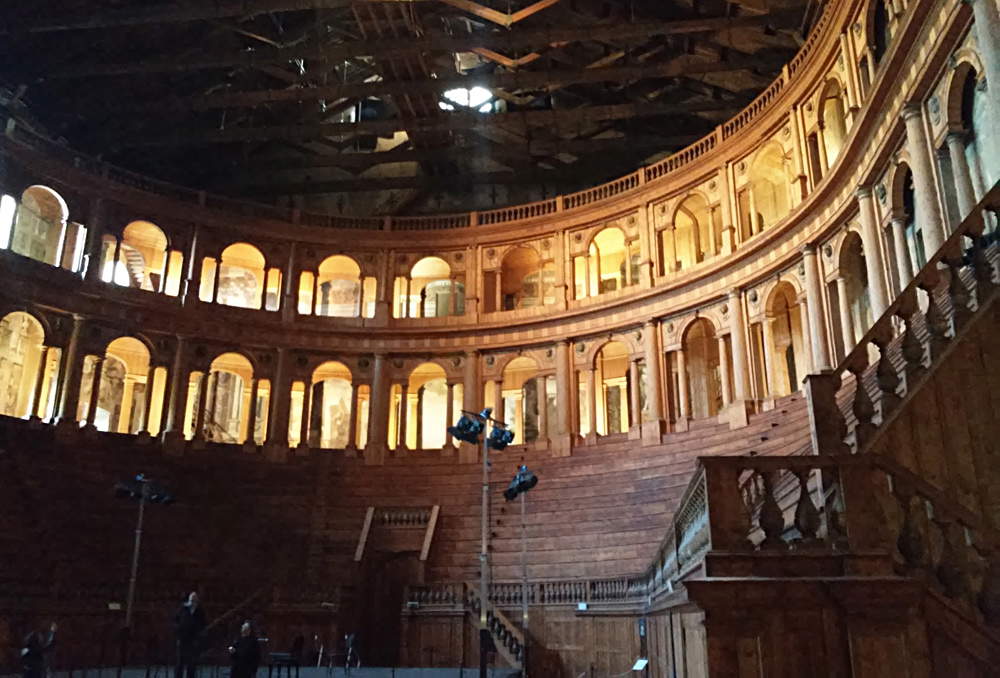As is well known, in the past few hours the appointments of the ten new directors of national museums have been issued, adding to the twenty appointed in 2015. You have probably also already read the names: Andrea Bruciati (Villa Adriana and Villa d’Este), Adele Campanelli (Archaeological Park of the Campi Flegrei), Andreina Contessa (Park and Castle of Miramare, Trieste), Fabrizio Delussu (Archaeological Park of Ostia Antica), Filippo Maria Gambari (Museum of Civilizations in Rome), Valentino Nizzo (National Etruscan Museum of Villa Giulia), Rita Paris (Archaeological Park of the Appia Antica), Daniela Porro (National Roman Museum), Francesco Sirano (Archaeological Park of Herculaneum), Simone Verde (Monumental Complex of the Pilotta, Parma).
 |
| Teatro Farnese, part of Parma’s Pilotta Monumental Complex. |
The first impression is that these are, for the most part, certainly more prudent and less disruptive appointments than those of 2015: for starters, the ten new directors are all Italians (will the committee have kept in mind the admittedly boorish and instrumental controversy over the nationality of the appointees two years ago?), and of them as many as six are Ministry officials. Interesting, in particular, is the case of archaeologist Valentino Nizzo, a 42-year-old with an extensive series of scientific publications behind him who joined the ranks of the Ministry only in 2010: Nizzo worked in the MiBACT Directorate General and was in charge of promotion and communication. The selection committee evidently wanted to achieve several things in one move, since Nizzo is relatively young, comes from the Ministry and has experience in promotion (it is certainly no mystery that new directors are chosen by virtue of their communication skills: it is the line dictated by the government). The others are all long or very long experienced, titled officials, certainly with all the credentials to manage the museums to which they have been assigned.
There would be much to discuss about the four directors who, instead, come from outside, if only because the main question marks are focused on them. The choice of Fabrizio Delussu, an expert archaeologist who arrives from the small Archaeological Museum of Dorgali in Sardinia and who will move on to an archaeological park with three hundred thousand visitors a year, appears very good, and that of Andreina Contessa is also of certain interest: the name of the scholar, a specialist in Jewish art, would seem to have been suggested by her international experience, since she has been since 2009 director of the Nahon Museum of Italian Jewish Art, a museum that has about 40,000 visitors a year. The scholar will have to contend with a museum of quite a different size, since in 2015 she counted one million admissions, between those who visited the Miramare Castle (250,000) and those who instead walked through its Park (800,000): will it have been the best choice?
More perplexing are the remaining two nominations. To Villa d’Este and Villa Adriana will come Bruciati, who is a contemporaryist and who has been artistic director and curator of exhibitions, events, and has worked with art galleries, but has never directed a museum ... and everyone, of course, has wondered why Villa d’Este and Villa Adriana have been entrusted to an expert in contemporary art: should we perhaps expect upheavals in the arrangements of these two museums? We shall see. Finally, it is worth spending a few more lines on Verde, who has been called to head a museum complex, that of the Pilotta in Parma, with great prestige, yet without boasting any experience in museum direction. Verde, who is an art historian as well as an active blogger, has curated exhibitions, served as an advisor to Walter Veltroni, and, since 2014, has held the position of “Head of Research and Editorial Production” at the France-Muséums agency (a company whose main mission is to bring the Louvre to Abu Dhabi)... but he has never directed a museum: again, given Minister Franceschini’s proven foreignophilia, it would seem to have played in favor of the appointment to have had experience abroad at a company with a heavy name. But directing a complex such as the Pilotta is quite a different task from being the “head of research and editorial production.” The same argument that had been made for many of the directors appointed in 2015 applies: we believe that experience abroad is a factor to be judged in an entirely relative way. It is a pity that in some cases, for Franceschini and colleagues, this factor seems to have carried far more weight than many other perhaps more fundamental parameters (including not entirely negligible experience directing Italian museums).
However, if we think that it is still too early to judge the directors appointed in 2015 (who for the most part have long worked on the furrow traced by their predecessors: the revolution that seemed to be born in reality proved rather timid, if not absent), as far as the new ones whose names have come out in the last few hours are concerned, our analyses can only be limited to a few meager considerations on their experiences. All that remains is to wish them well in their work: Italian museums need capable directors who know how to innovate and renew, and who are able to put the museum itself at the center of their action.
Warning: the translation into English of the original Italian article was created using automatic tools. We undertake to review all articles, but we do not guarantee the total absence of inaccuracies in the translation due to the program. You can find the original by clicking on the ITA button. If you find any mistake,please contact us.